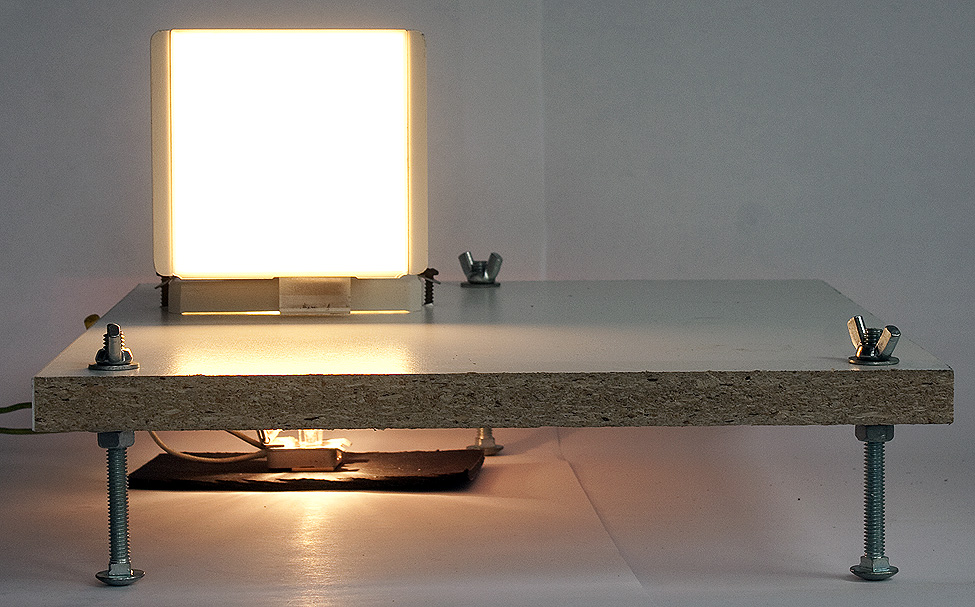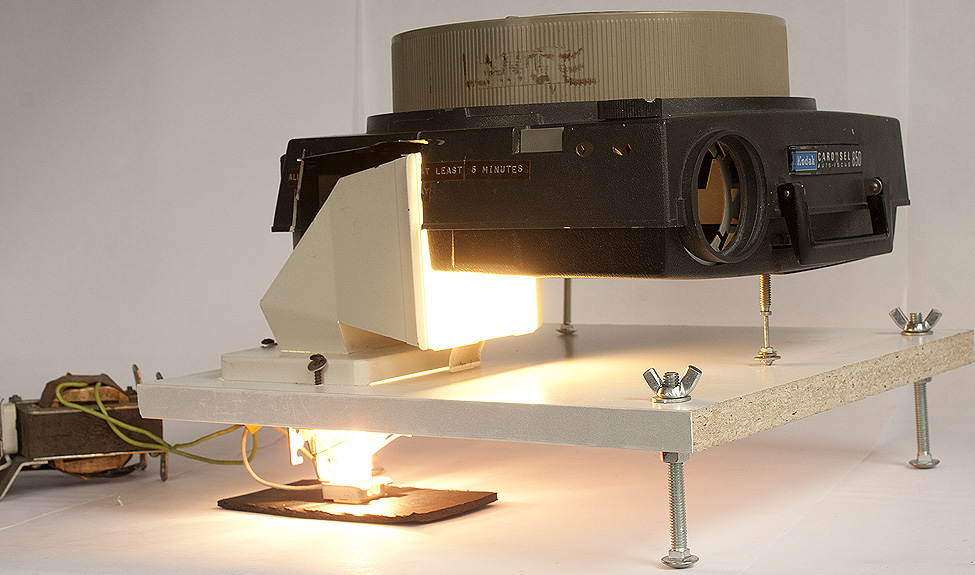

There are those of us with hundreds, nay, thousands of slides that they want digitized, (for God only knows what reason), who find plucking slides out of decades old, well-rehearsed Kodak Carousel slide shows to lay on a flat bed scanner or feed through a film scanner a tedious task. So tedious that it gets put off.
But since I have in my possession 8 of the above-mentioned Kodak Carousel projectors, 2nd and 3rd generation models, some deceased, one primo one with auto-focusing and self-timng operable, I decided to literally hack into one of them to provide a transport to present them not on a wall but to a macro lens to be foused on a dSLR chip. I had tried this idea previously by simply removing the projection lens of one of the Carousels, but the projector's built-in illumination system was not very uniform from center to edge, and the digitized images really showed it, the fall-off in the corners is not so noticeable to the human eye looking at a projected real image on a screen, but the camera never lies!
I had come into possession thanks to one of Harrington College of Design's most talented students, Britton Black, a diffuser from a color photograph printer, that totally scrambles light coming into it into a totally homogenous screen. Photographing a slide lit by this device proved that it would provide the needed edge to edge evenness, for, after all that was what it was supposed to do in the color printer! Sort of like the flashed or opal glass diffuser in some antique enlargers, only better, using a halogen bulb instead of a serpentine fluorescent that is of dubious color balance.
Here is the head on view of the diffuser's output screen, a 50 Watt EXT MR-16 bulb sits under it. A trio of carriage bolts adjust the height above the bulb.

The Carousel carcass is positioned over the diffuser on the base.where its halogen lamp had originally sat but has now been extracted, along with the cooling fan assembly. Longer screws in the Carousels levelers complete the fixturing.

A 105mm f/4 Bellows Nikkor looks at the diffuser through the former Ektanar lens port.

The first test object was, what else, a USAF 1951 Resolution Target. Here it is loaded into the usual slot in the Carousel, but back lit by the very even diffuser.

Here is the whole target:

And this is the center prime filet of the target, cropped and resized for actual pixels, for a true interrogation of the resolution target:

Element 1 in group 6 is just barely resolved, which translates to 64 line pairs per millimeter, or 1625.6 line pairs per inch, and if that is translated into the digital units of resolution that would be 3251 dots per inch. Imagine how long a slide would take to scan at that resolution! But here the order of